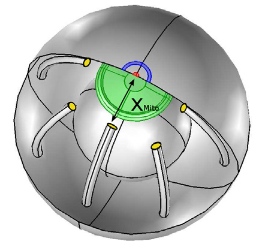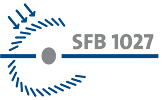Interplay of channels, pumps and organelle location in calcium microdomain formation
Heiko Rieger,
Martin Peglow

To analyze the influence of Ca
2+
microdomains on the global
cytosolic Ca 2+
concentration, we consider the polarization and activation of
T-cells after the formation of an immunological synapse as a model system.
For T-cell proliferation and activation, a high and robust Ca 2+
signal lasting
from minutes up to hours is needed. This raises the intriguing question of how
T-cells overcome all those mechanisms which normally remove an increased
Ca 2+
level as fast as possible from the cytosol. With the help of theoretical models
we predict that, after the formation of a local Ca 2+
influx pathway via STIM1 and
Orai1, mitochondria relocation toward and accumulation of plasma membrane
Ca 2+
ATPase and sarcoplasmic/ endoplasmic reticulum calcium ATPase pumps
at the immunological synapse are sufficient to achieve a long-lasting increased
global Ca 2+
concentration. In addition, we also uncover new mechanisms to
generate Ca 2+
oscillations, which are important for efficient T-cell activation.
Experimental tests and the implications of our predictions are discussed.
| [1] M. Peglow, B. A. Niemeyer, M. Hoth and H. Rieger Interplay of channels, pumps and organelle location in calcium microdomain formation |
|
New J. Physics 15, 055022 (2013)
|
[pdf], [link]
|
Legal notice (Impressum)
Privacy policy




